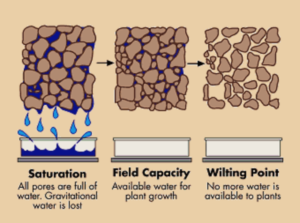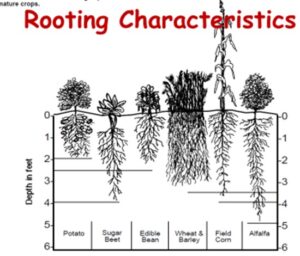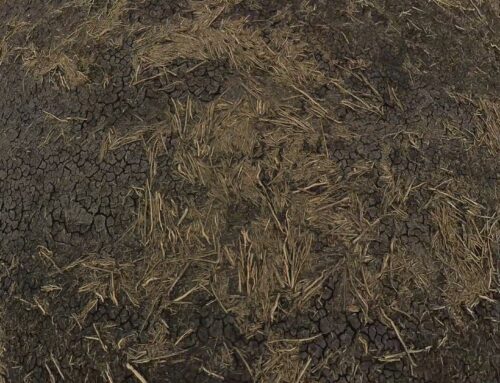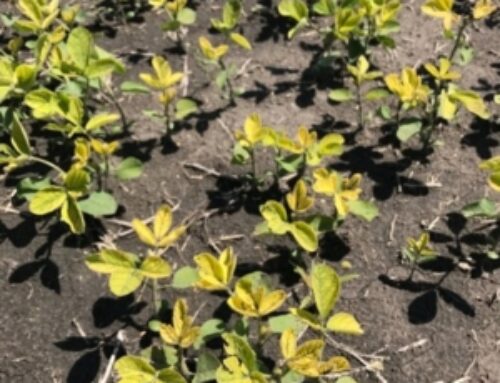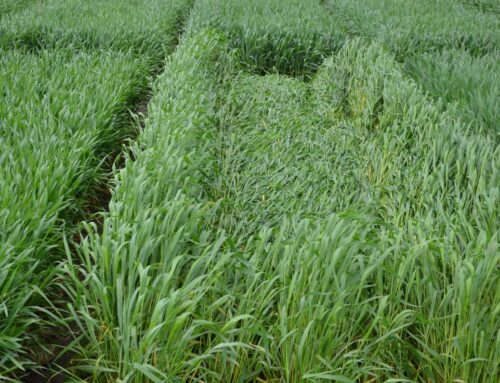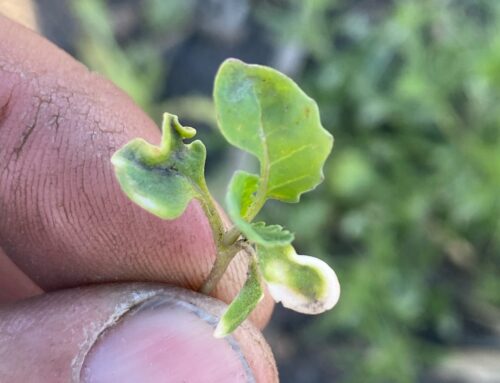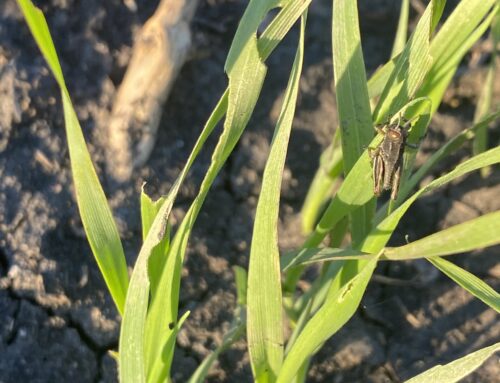Across the prairies, water availability and utilization is one of the main determinants of yield –
but how do we know if we have adequate moisture for the crop to reach its full potential?
The water available for plant growth is the difference between the water present at field capacity (the amount of water remaining in the soil after it has been saturated and allowed to drain freely) and the wilting point (the soil water content at which water is no longer available to plants, causing them to wilt since they cannot extract enough to meet their requirements).
The first equation developed to predict wheat yields was
Yield (bu/ac) = (Water Use – 2) x 4
where Water Use (inches) = (Soil Available Water at Seeding – Soil Available Water at Harvest) + Growing Season Rainfall [+ Irrigation, where applicable]
Under this equation, it would take at least 2 inches of water to produce any yield at all.
When double the water is available (4 inches), yield bumps to 8 bu/ac since
(4 – 2) x 4 = 2 x 4 = 8 bu/ac
If 5 inches of rain came throughout the season in addition to the 4 inches available in the soil, yield jumps to 28 bu/ac since
Water Use = 4 + 5 = 9 and Yield = (9 – 2) x 4 = 7 x 4 = 28 bu/ac
You can see from this quick and simple math that additional available moisture results in greater yield, even though most of us hope for a wheat yield higher than 28bu/ac…
So how much water is needed, and how does this amount change, depending on various conditions throughout the growing season?
There are 4 main factors that impact water use:
- Crop Type
We all know that different crop types require different amounts of water throughout the growing season. Some crops do better on dry years (the ones that require less moisture to reach a greater yield potential) while others struggle.
Soybeans, for example, require significantly more water than wheat, canola, and pulse crops, taking up 400–500 mm (16–20 inches) throughout the growing season. The table below provides rough estimates on how much water different crops require over the course of a season. The actual amount will vary depending on additional factors, including planting date and environmental conditions.
| Crop | Pea (Dry) | DryBean | Flax | Barley | Wheat (Winter) | Canola | Wheat (Spring) | Alfalfa Hay | Corn (Feed) | Corn (Silage) |
| Water Use (mm) | 300-370 | 300-375 | 340-440 | 380-430 | 400-430 | 400-480 | 420-480 | 540-680 | 460-760 | 580-650 |
Research in Alberta has shown that under good environmental conditions, for each inch (25 mm) of water used, wheat produces 5 to 7 bushels/acre, barley produces 7 to 9 bushels/acre and canola produces 3.5 to 4 bushels/acre.
It’s also important to note that different crops have different rooting systems.
Monocot crops, such as wheat, barley, oats, and corn have a more widespread, fibrous root system, while dicots like canola, soybeans, and pulses have a longer, narrower taproot. Depending on the species, these types of root characteristics can either positively or negatively affect plants’ ability to reach moisture further down in the soil profile.
- Temperature
Temperature also affects crop water usage, as per the chart below:
| Temperature (°C) | 10-15 | 16-21 | 21-27 | 27-32 | 32-37 |
| Water Use (inches per day) | 0.10 | 0.15 | 0.20 | 0.25 | 0.30 |
As temperature increases, so do water requirements due to increased evaporation.
This can be an issue amplifying the effects of drought since fields in drier areas have less water available, and higher temperatures which lead to greater evaporation.
The more water you have, the less you need – so in dry years when it is warmer crops require more water, and in wet years when it is cooler they require less.
(Part 1 of 2)

